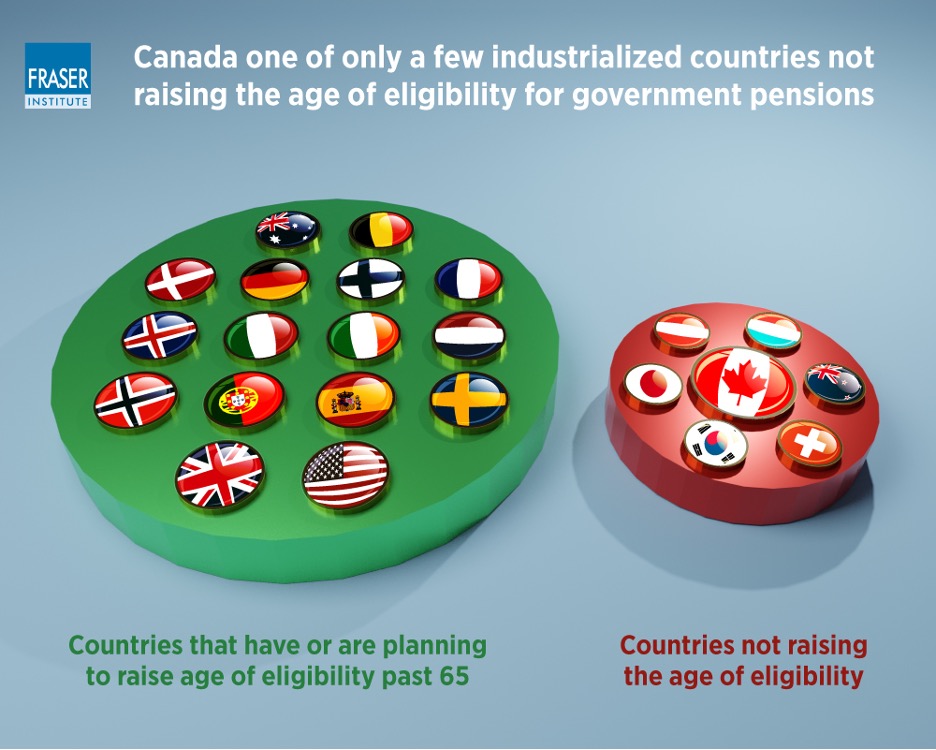Canada’s eligibility age for government retirement benefits still stuck in the past

We have just turned over the calendar to mark the arrival of a new year, but Canada’s approach to setting the age of eligibility for government retirement benefits remains stuck in the past.
As the years tick by and Canada’s population continues to age in part due to longer life spans than existed in the past, the federal government continues to maintain the age of eligibility at 65 years even as peer countries around the world adjust to economic and demographic realities by introducing significant reforms.
In high-income countries around the world, populations are aging. This is a demographic reality with important implications for government finances. An aging population puts pressure on health-care costs and means more spending on income support for older people. At the same time, a smaller share of the population being of working age has a negative effect on tax revenue.
Around the world, most high-income countries are responding to these economic and demographic realities by raising the age when individuals become eligible for government retirement and old age benefits. This is the appropriate policy response that can bring important benefits to citizens such as bolstering the long-term health of government finances and helping ensure the availability of resources for other priorities.
Canada, however, is not implementing similar reforms. The eligibility age for Old Age Security (OAS) and the Guaranteed Income Supplement (GIS) has not budged in response to the developments described above and the Trudeau government has committed to the status quo.
To understand the extent Canada differs from most of its peers in this respect, a 2022 study published by the Fraser Institute assessed policy trends surrounding eligibility ages for similar programs. The study found that of the 23 countries examined, 16 have either already increased their eligibility ages over the age of 65 or are in the process of doing so. The infographic below illustrates these results. Several countries are going further and indexing the age of eligibility for key programs to life expectancy, which will mean that policies will automatically adjust to new demographic circumstances as retirements tend to last longer.

Canada was once on a course to participate in this sensible international trend. But the Trudeau government explicitly rejected a planned reform to the OAS and GIS that would have brought Canada’s policy approach into closer alignment with our peers. Specifically, in 2012, the federal government introduced a reform that would have raised the eligibility age for the OAS and GIS supplement to 67 years old by 2029. However, in 2015, the Trudeau government revered this decision and determined that the eligibility age would remain at 65.
Governments in high-income countries across the globe are adjusting to the realities of an aging population and longer retirements by increasing the eligibility age for retirement programs and elderly benefits. Canada’s refusal to take similar steps will put pressure on government finances in the future and means fewer resources will be available for other important priorities.
Author:
Subscribe to the Fraser Institute
Get the latest news from the Fraser Institute on the latest research studies, news and events.

